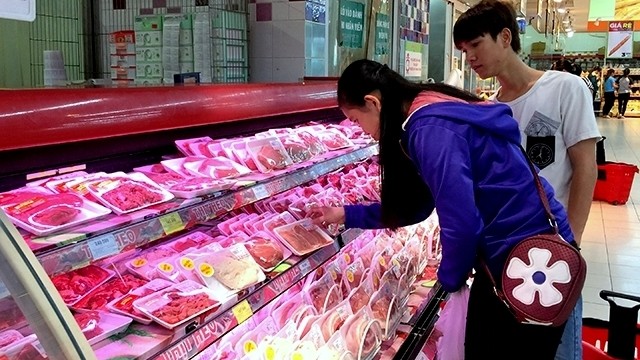The issues were under discussion at an agricultural extension forum organised by the National Agricultural Extension Centre under Department of Livestock Production (the Ministry of Agriculture and Rural Development) in the Mekong Delta province of Tien Giang, on August 11.
Reports presented at the forum showed that the domestic livestock industry has developed strongly in recent times and has diversified the types of livestock to better serve consumer demand and exports. The noteworthy results are that of pig heads, which have increased by 13% each year and cows more than 6%; of which, the southern region’s livestock and poultry production accounts for over 25% of the country’s total.
According to Ha Thuy Hanh, Deputy Director of the National Agricultural Extension Centre, breeding plays a strategic role in the development of the country's agricultural sector. At present, in order to promote the role of animal husbandry in the market economy in general, the application of high technologies and the introduction of technical advances to improve the quality of products, increase productivity and output of the livestock industry in order to meet market demand, is crucial.
Recently, enterprises and farmers have applied hi-tech in the breeding and processing of livestock products through effective new models and practices. Up to date, 29 hi-tech agricultural complexes have been put into operation or are being planned in 12 provinces and cities throughout the country.
Nationwide, 25 enterprises have been granted certificates for high technology application. Localities such as Dong Nai, Binh Duong, Binh Phuoc and Long An are taking the lead in the number of farms applying high technologies for the production of good quality products, while minimising environmental pollution and saving on costs.
At the forum, agricultural specialists, managers and farmers exchanged their experiences regarding the application of high technologies in animal husbandry activities, as well as discussing institutions and policies in support of the sector’s development.
Experts said that the application of high technologies in animal husbandry is a new and effective direction to overcome the limitations of small-scale and fragmented agricultural practices in Vietnam, thereby, helping the livestock industry develop sustainably, whilst increasing competitiveness and improving product quality, in line with the trend of innovation and integration.
At present, high technologies in livestock production are diversified with advances applied in breeding, animal feed production, veterinary disease prevention and control, automation of production lines and care of livestock, treatment of pollution in breeding, and the processing of livestock products.
Deputy Director Hanh said that to apply high technologies in animal husbandry, livestock products must meet a number of strict standards, such as the Asean Good Agricultural Practice (GAP) and Global GAP, as well as producing organic products.
Farmers, especially local agricultural extension officers, should be aware of the GAP issue and support local farmers if they wish to recognise certified products, Hanh suggested, adding that in 2018, the National Agricultural Extension Centre will coordinate with local centres to organise training courses on deploying and approaching GAP certification on chicken meat products.
Nguyen Van Trong, Deputy Head of the MARD’s Department of Livestock Production, said that in the restructuring of the livestock sector, the adoption and application of modern high technologies is one of the solutions that needs to be focused on in order to improve productivity and the quality of livestock.
He suggested continuing to apply advanced technologies to livestock production, moving from small-scale farming models in households to large-scale models, increasing the dissemination and transfer of new technical advances, advanced animal breeding technologies and high-quality commodities for ranchers, as well as improving breeds with the aim of importing good varieties and the conservation of breeds with high productivity and quality.
















